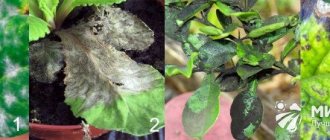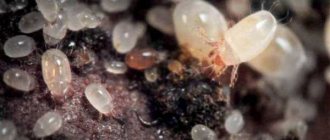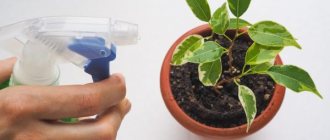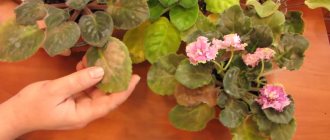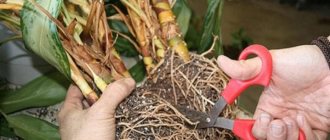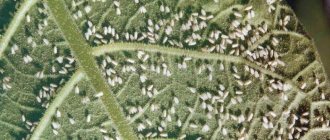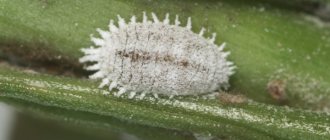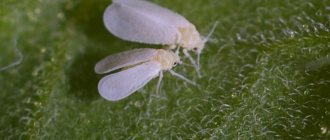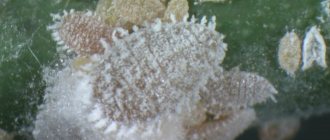Why do spots appear on indoor plants? (2 photos)
The color of leaves can also be affected by various diseases and pests that are dangerous to plants. So, with Alternaria blight, a fungal disease, the leaves, tubers and stems turn brown. The disease appears almost at the roots, and then rises higher and higher. Alternaria blight progresses especially rapidly during sudden temperature changes. According to experts, the best prevention of this disease is regular ventilation. In addition, high shoot densities should not be allowed to eliminate the source of bacteria.
With anthracnose, the spots on the affected leaves can have different shades: from gray-yellow to brown and purple. They may subsequently turn brown. Then spores appear on the leaves, and the damaged surface turns from smooth to rough. Gardeners emphasize that this disease develops at high humidity and elevated temperatures.
Downy mildew is another disease that affects indoor plants. First, yellow spots appear on the upper part of the leaves, which subsequently turn brown, and soon turn brown. A gray coating appears on the lower part of the surface, turning black. In the later stages, darkened vessels can be noted on the cut leaves, indicating an advanced disease.
Powdery mildew is similar in symptoms to downy mildew, but in this case the blackness spreads over the entire leaf, covering it on both sides. The flowers located next to the leaves dry out and fall off. The development of the disease is provoked by a combination of high humidity and warm air. Also, the disease can develop due to lack of air, but its access must be controlled so that the plant does not suffer from drafts.
Infection brought in from a window, high humidity and lack of air are the causes of gray rot. Because of this disease, the stem is damaged, which becomes covered with a grayish-olive coating. Later the disease spreads to leaves and flowers. In this case, the spots resemble dry rot or loose cotton wool.
As for pests, enemies such as aphids, cyclamen mites, nematodes, mealybugs, scale insects and caterpillars can contribute to the appearance of stains. To protect the plant from them, it is necessary to regularly carry out preventive measures. In particular, if the pots are not used for the first time, they should be thoroughly washed and filled with purchased soil. It is a good idea to heat homogeneous soil in the oven, which will destroy insects and their larvae.
Experts recommend isolating a newly planted plant for a month and regularly inspecting it for the presence of harmful insects. After about a month, the flower can be joined to others. At the same time, if pests make themselves known, you need to wipe the leaves weekly with a soft damp cloth or soap diluted in water.
Reasons for the appearance of yellow plaque on the ground
A yellowish-white, dry coating on the soil in a flower pot usually resembles in appearance the scale that appears in a teapot. Some gardeners mistakenly assume that the reasons for such plaque are:
- insufficient air humidity in the room;
- poor watering;
- too acidic soil;
- excessive use of fertilizers.
In fact, these are all myths. The only real reason for the appearance of such plaque is the composition of the water used for irrigation.
Too hard water, which contains a large amount of salts and alkaline earth metals, leads to the formation of a similar crust on the soil surface.
At first glance, it may seem that the problem will be solved by simply replacing the top layer of soil. In reality, things are much more serious.
Yellow mold in flowers.
How to get rid of yellow plaque in flower pots
If the plaque has tightly covered the top layer of soil, then it is best to remove it and replace it with a new substrate. To avoid this problem again in the future, you should water the plant exclusively with soft water. To do this, you can use soft purchased bottled water or soften it yourself using one of the proven methods:
- let tap water stand for at least 24 hours;
Mold on the surface of the soil.
- add citric acid to the water in the amount of 1 teaspoon per liter of water;
- boil water;
- purify water from salts using special filters;
- Place fabric bags filled with peat into water.
Soil profile of automorphic soils.
Automorphic soils are soils that are formed under conditions of well-drained watersheds, i.e. under the influence of atmospheric moisture, the systematic downward currents of which cause the movement of chemical elements from top to bottom. The soil moisture regime under these conditions can be either leaching or non-flushing. Groundwater is located relatively deep.
The formation of the profile of automorphic soils is shown schematically in Fig. 1.
What are brown spots on lawns? Story from Ontario
Nature has nothing random. Everything in it is arranged very wisely and interconnected; there is nothing superfluous in a meadow or forest clearing. And brown spots that appear on peculiar “bald spots” in the grass, greatly disturbing summer residents, are also found in the wild.
What is it? This was the question asked by a man living in Ontario, and the story of his research into the spot is quite instructive. In front of this man’s house there was a quite nice lawn. One day, while cutting the grass, he noticed a “bald area” that visually resembled a brownish-brown spot. The earth felt warm and soft to the touch.
The Home Cleaning Basket and Other Simple Time-Saving Tricks
We prepare a delicious roll with cheese and ham from potatoes
Blue or yellow: how to calculate your interior color by date of birth
Without thinking twice, the man invited his neighbors to his plot to work together to figure out what exactly was happening on his lawn. Together, people for a very long time built versions of what caused the anomaly and what the spot itself might be. Various assumptions were put forward, including versions that aliens landed here at night.
Tired of guessing, one of those examining the spot decided to slightly pry the ground to see what was inside the spot. Of course, the man put on gloves. After all, it could be a nest of some harmful insects. However, under the layer of earth there were cubs of a small animal, recently born, blind, naked and helpless.
What to do when faced with brown spots?
As a rule, bald spots on lawns are not dangerous. These can be shelters for baby shrews, rabbits or other small animals. Not all of them build deep multi-level burrows; some hide their young under a layer of loose earth.
Of course, each person decides for himself what to do when he discovers such a “bald spot.” However, if you happen to stumble upon it not in your own garden, but in a forest clearing or field, you should simply step aside and not disturb the newborn babies.
But if a stain is found in the garden, you should find out what is under the soil layer. This could be a nascent anthill or a mole cricket nest. In this case, you will have to take action and get rid of the pests before they fill the entire garden area.
Found a violation? Report content
What does the disease look like?
In fact, rust on mallow is very expressive; it is quite difficult to confuse this disease with something else. In order to understand that your indoor plants have been exposed to this type of fungal disease, you can pay attention to the following signs:
- Light brown spots first appear on the leaves; they look like bumps with a dry texture.
- Large spots periodically collapse and form pustules; a very intense release of moisture occurs here, so the leaf begins to wither and dry out.
- In an advanced state, the disease spreads throughout the plant, including flowers, and it changes color to brown or brown.
- In critical condition, the leaves fall off and the plant gradually dries out completely.
Since rust is a fungus, it spreads very quickly, and easily spreads to other, still healthy leaves and neighboring pots. If you notice rust on indoor plants, treatment should begin as quickly as possible, otherwise the pot will simply disappear and you will have to throw it away.
External signs of the disease and their causes
A healthy lawn has rich green grass. If withered areas appear, it means the lawn is suffering from disease. The plant care plan should be adjusted. The change in color is due to the lack of substances and fertilizers, but watering also greatly affects the condition of the lawn.
Spores, bacteria and fungal diseases become problems for the lawn. If pathogens are transported to the lawn by wind, they will begin to multiply. Plants need prevention, and it is important to use fungicides and other lawn products on the area if it becomes infected with the disease.
Disease affected areas on the lawn form gradually. First, several areas are modified, then there will be more damaged lawn grass, on which brown spots form.
If the problem is not due to pests, but the lawn continues to become stained, then the soil is low in nitrogen. But lawn grass also suffers from nitrogen oversaturation; fungal diseases form, which will soon migrate to healthy grass.
Soil structure
- this is the ability of the soil to naturally disintegrate into separate units (aggregates), consisting of mechanical soil elements glued together with humus and silty particles. The shape of structural units, their size and strength clearly reflect the nature of the processes occurring in the soil.
Soil structure influences soil aeration and water permeability, and determines the soil's resistance to erosion. The formation of soil structure is influenced by: the root system of herbaceous vegetation, the activity of soil fauna, as well as various physical processes: wetting and drying, freezing and thawing, heating and cooling. The main adhesive substances in soils during their structuring are: humus, clay matter, iron and aluminum hydroxides. Therefore, sandy soils, devoid of clay particles and containing little humic substances, are structureless. An important role in structure formation in the humus horizon is played by herbaceous plants, which create a lumpy structure with their root system.
Based on their shape, structural units are divided into three main types: cuboid type (the units have the same dimensions in all three dimensions and are usually represented by irregular polyhedra), prism-shaped type (one of the three dimensions predominates, due to which the unit is more or less elongated upward); plate-shaped type (the unit is flattened in height and developed along the other two dimensions). In our country, they use the classification of structural units according to shape, size and surface character, developed in 1927 by S.A. Zakharov.
The name of the soil structure is given by the dominant units. Each soil type and each genetic horizon is characterized by certain types of soil structures. For example, humus horizons are characterized by a granular, lumpy-granular, powdery-lumpy structure; for eluvial horizons – platy, leafy, scaly, lamellar; for illuvial - columnar, prismatic, nutty, blocky, etc.
In the field, to determine the structure of soils, a small sample of soil is cut out from the horizon under study with a knife and tossed several times on the palm of the hand until it breaks down into structural units. They are examined and the degree of their homogeneity, size, shape, and surface character are determined.
Changes in soil formation conditions are reflected in the structure of the humus horizon. The strength of the structural arable horizon is important for agriculture.
Of great importance for the agronomic characteristics of the soil is the water stability of the soil structure, i.e. the formation of durable, non-erosable sections in water. Soils with a water-resistant structure have a water-air regime, mechanical properties, etc. that are favorable for plant development. Soils that do not have such a structure quickly float, become impermeable to water and air, and when dry, crack into large blocks.
Granulometric (mechanical) composition of soils.
The granulometric (mechanical) composition of the soil is the weight ratio of particles of different sizes in the soil. Particles of different sizes mean groups of particles whose diameter lies within certain limits. Each of these groups is called the granulometric (mechanical) fraction of the soil.
Grouping mechanical elements by size is called mechanical element classification. In our country, the classification of N. A. Kachinsky is used (Table 1).
| Table 1. CLASSIFICATION OF MECHANICAL ELEMENTS OF SOIL (N.A. Kachinsky, 1965) | ||
| Name of mechanical elements | Diameter of mechanical elements, mm | |
| Physical sand (> 0.01 mm) | Stones | > 3 |
| Gravel | 3–1 | |
| Coarse sand | 1–0,5 | |
| Sand medium | 0,5–0,25 | |
| Fine sand | 0,25–0,05 | |
| Coarse dust | 0,05–0,01 | |
| Physical clay ( | Dust average | 0,01–0,005 |
| Dust fine | 0,005–0,001 | |
| Silt is rough | 0,001–0,0005 | |
| Silt thin | 0,0005–0,0001 | |
| Colloids | ||
The separation of mechanical fractions is based on differences, mainly in the water-physical properties of the particles. Thus, the rocky part of the soil (d > 1 mm) from the point of view of water-physical properties is not active, inert; it is not able to retain moisture. Sand (d = 1.0–0.05 mm) has a weak water-holding capacity. Dust (d = 0.05–0.001 mm) retains water very well and has good water-lifting capacity; silt (d
In soil science, the classification of soils by mechanical composition, developed by Kaczynski, is accepted, according to which all soils are divided depending on the content of physical clay in them, i.e. particles whose diameter is less than 0.01 mm. For each type of soil formation, the norms of physical clay content are not the same (Table 2).
| Table 2. CLASSIFICATION OF SOILS BY MECHANICAL COMPOSITION (N.A. Kachinsky, 1965) | |||
| Brief name of the soil based on its mechanical composition | The content of physical clay (particles with a diameter | ||
| Type of soil formation | |||
| Podzolic | Steppe, red soils and yellow soils | Solonetzes and highly saline soils | |
| Sand is loose | 0–5 | 0–5 | 0,5 |
| Sand cohesive | 5–10 | 5–10 | 5–10 |
| Sandy loam | 10–20 | 10–20 | 10–15 |
| Light loam | 20–30 | 20–30 | 15–20 |
| Medium loam | 30–40 | 30–45 | 20–30 |
| Heavy loam | 40–50 | 45–60 | 30–40 |
| Light clay | 50–65 | 60–75 | 40–50 |
| Clay medium | 65–80 | 75–85 | 50–65 |
| Clay is heavy | > 80 | > 85 | > 65 |
The mechanical composition of the soil is an important characteristic necessary to determine the productive value of the soil, its fertility, processing methods, etc. Almost all physical and physical-mechanical properties of the soil depend on the mechanical composition: moisture capacity, water permeability, porosity, air and thermal conditions, etc. In field conditions, the mechanical composition is determined by the degree of plasticity - by touch. With a certain skill, soils can be quite clearly divided into clayey, loamy, sandy loam and sandy:
Sandy soils are structureless, lack cohesion, are free-flowing, and can be rolled into a ball if moistened enough.
Sandy loam soils are free-flowing when dry, structureless, and when wet they easily roll into a ball, but do not form a “cord” or “sausage.”
Loamy soils - when dry they are easily rubbed into the skin, when wet they are plastic and easily roll out into a “cord” or “sausage”. The thinner the “cord” or “sausage”, the closer the soil is to clay.
Clay - when dry, when rubbed on the palm, they give a thin, homogeneous powder (powder), which is rubbed well into the skin; when wet, they roll out into a long, thin cord, easily rolled into a ring without cracks.
The final name of the soil based on its mechanical composition is made in the laboratory using a special analysis, and on the basis of this the name of the soil is given. The general name of the soil based on its mechanical composition is given according to the mechanical analysis of the upper horizon (0–25 cm). For example, southern chernozem, clayey.
